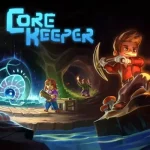Advertisement
Popular Now
Introduction
Redstone is often considered the "electricity" of Minecraft, enabling players to create intricate contraptions ranging from simple doors to fully automated farms. While its basics are easy to grasp, mastering its advanced mechanics opens up endless possibilities. This guide delves deep into the complexities of Redstone and its applications.

Introduction to Redstone Mechanics
Redstone serves as the backbone of Minecraft’s technical features. By understanding its properties and behavior, you can unlock the potential to automate and innovate.Gathering and Crafting Redstone Components
Before diving into complex builds, you need to gather essential resources and craft components.Where to Find Redstone
- Mining: Found in veins between levels 1 and 16.
- Witch Drops: Occasionally dropped by witches.
- Trading: Obtainable from cleric villagers.
Key Redstone Components
- Redstone Dust: The foundation for all circuits.
- Repeaters: Extend signal range and control delays.
- Comparators: Manage signal strength for more complex circuits.
- Observers: Detect block updates for automated systems.
Understanding Redstone Power and Signals
To use Redstone effectively, it’s crucial to understand how power and signals work.Power Sources
- Levers and Buttons: Simple on/off switches.
- Pressure Plates: Activated by players or mobs.
- Redstone Blocks: Provide constant power.
Signal Behavior
- Redstone signals weaken as they travel. Use repeaters to maintain strength.
- Signals can be transmitted vertically using torches or dust.

Basic Redstone Circuits
Start with foundational circuits to build your knowledge.Redstone Clock
A clock creates a repeating on/off signal. Use it to automate repetitive actions like dispensing items or toggling lights.XOR Gate
This logic gate outputs a signal when inputs are different. Use it in puzzles or traps.Intermediate Redstone Builds
Move beyond basics with these practical and creative designs.Automatic Doors
- Materials: Redstone, pistons, pressure plates.
- Steps: Connect pressure plates to pistons using Redstone to create seamless entryways.
Item Sorter
- Purpose: Organize items into specific chests.
- Mechanics: Use hoppers, comparators, and Redstone to filter items automatically.

Advanced Redstone Applications
Once you’re comfortable with intermediate builds, explore advanced systems that push the limits of Minecraft engineering.Flying Machines
- Components: Slime blocks, pistons, observers.
- Uses: Efficient transport or dynamic builds like moving platforms.
Infinite Item Generators
- Example: Cobblestone generators using lava and water.
- Automation: Combine with pistons and Redstone clocks for continuous mining.

Optimizing Redstone Efficiency
Advanced builds can become resource-intensive. Optimize your designs for better performance.Compact Wiring
- Minimize space by stacking Redstone vertically.
- Use observers to reduce complexity.
Lag Reduction
- Avoid excessive clocks or entities.
- Use repeaters and comparators sparingly in large builds.
Redstone in Farming Automation
Farms are among the most practical uses for Redstone. Automate resource collection to save time and effort.Crop Farms
- Use observers to detect crop growth.
- Pistons can harvest crops into hoppers and chests.
Mob Farms
- Use Redstone to control mob spawning and item collection.
- Add traps and dispensers for effective mob elimination.
Redstone and Command Blocks
Combine Redstone with command blocks for unparalleled control and creativity.Command Block Basics
- Activation: Use Redstone signals to trigger commands.
- Examples: Teleportation, spawning mobs, or altering the environment.
Creative Applications
- Adventure maps: Use command blocks to create puzzles or story-driven gameplay.
- Custom mini-games: Implement unique rules and mechanics.
Experimenting with Redstone Contraptions
The best way to master Redstone is through experimentation. Test new designs, iterate, and learn from failures.Community Inspiration
- Explore builds on platforms like Reddit or YouTube.
- Participate in Minecraft forums to share ideas and gain feedback.
Prototyping
- Build small-scale models in creative mode.
- Test functionality before implementing in survival mode.



















